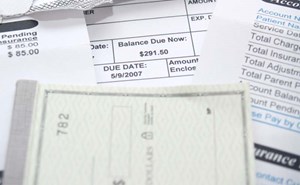Earlier this week, ACEP and the Emergency Department Practice Management Association (EDPMA) submitted an official response to an interim final regulation implementing part of the No Surprises Act. If you need a refresher of what’s in the reg, please click here for ACEP’s summary.
The No Surprises Act, which Congress passed at the end of last year, bans balance billing for out-of-network (OON) services starting in 2022 and establishes a back-stop independent dispute resolution (IDR) process. As you may recall, ACEP teamed up with EDPMA to form a joint task force that represented the whole house of emergency medicine (EM). Over the last six months, we have engaged directly with key federal agencies in charge of implementing the law. Our work preceded the release of any regs. In March, we sent a 19-page letter outlining our policy positions on key issues that affect emergency care, and in May, we followed-up with another letter that provided technical feedback on the specific information that will be necessary to accurately bill patients for OON emergency services. Further, we met directly with the federal government several times, including an informal meeting with the Center for Consumer Information and Insurance Oversight (CCIIO)—the main agency implementing the law— and official meetings with the White House’s Office of Management and Budget.
The No Surprises Act is being implemented in stages by the U.S. Departments of Health and Human Services (HHS), Treasury, and Labor (collectively referred to as “the Departments”). The first interim final reg—which we just responded to— was released on July 1st. As we worked on the response to this reg, we simultaneously were developing recommendations and input for the Departments to consider for the second reg—expected to be released shortly. This second reg will be as important or even more important than the first reg, as it will mainly focus on the IDR process. The IDR process can be used by health plans and clinicians such as yourselves to ultimately determine the final payment amount for OON services. On August 10, ACEP and EDPMA sent a letter outlining our feedback on the IDR process to the Departments in anticipation of the second reg being released.
ACEP and EDPMA’s response to the first interim final reg dives into key issues that affect you and your patients, and that have downstream implications for the IDR process. Overall, our letter focuses on four key areas:
Calculation of the Qualifying Payment Amount (QPA)
One of the major policies included in the reg is the methodology that health plans must use to calculate the qualifying payment amount (QPA). The QPA is based on the median in-network amount for a particular service in a specific geographic area. Under the No Surprises Act, the QPA is used for two purposes: to determine cost-sharing requirements for patients in cases where a “specified state law” (more on that later) does not apply, and as a factor that IDR entities can consider when selecting between the offer submitted by a health plan and the offer submitted by clinician or facility in order to determine the total payment for OON emergency services.
In the interim final reg, the Departments only address one function of the QPA—to determine patients’ cost-sharing amount for an OON service. The primary goal of the No Surprises Act is to protect patients from unexpected medical bills and out-of-pocket costs. Therefore, ACEP and EDPMA believe that the Departments very appropriately made it extremely clear that much of their decision-making process regarding the QPA was focused on the impact the reg would have in reducing patient cost-sharing amounts. However, by doing so, the Departments did NOT ensure that the QPA would be an accurate representation of prevailing market rates for specific clinical services. In our comments, we specifically discuss how the Departments’ approach to calculating the QPA will produce QPAs that do not reflect market rates.
As a result of this clear decision, we believe that the QPA will not be a fair and representative metric in arriving at the final amount that is ultimately paid to the clinician or facility. We therefore encourage the Departments to remain consistent in this application when writing the second reg related to the IDR process and avoid making the QPA the primary consideration of arbitration during the IDR process.
Specified State Law
While the No Surprises Act establishes federal requirements for adjudicating and paying for OON services, it also defers to individual states that have their own laws in place for dealing with OON care—referred to as “specified state laws.” In the reg, the Departments attempt to answer the basic question of when a state law or the federal law should apply. They lay out a “three-part test” for making this determination. A state law applies if it includes:
- the plan involved (allowing for ERISA plans to opt-in if they are not otherwise subject to the state law)
- the OON clinician or emergency facility involved; and,
- the item or service involved.
In instances where a state law does not satisfy all of these criteria, the state law would not be used to determine the cost-sharing amount or out-of-network rate, and the federal law would instead be applied. In the reg, the Departments state that they do not think there would be numerous instances when it would be unclear whether state or federal law applies.
ACEP and EDPMA disagree with the Departments’ assessment that there will be few instances when it will be unclear whether federal or state law applies to the claim. Some state laws are extremely complicated, and it is not always clear if they have a method of determining the total amount that should be paid for out-of-network services. In these states with complex laws, relying on health plans to decide in each individual case whether the state law or federal law applies will result in significant confusion and will potentially open the door to cherry-picking. We therefore urge the Departments to require that each state, prior to each calendar year, report to them whether or not it has a qualifying state law, and if so, for which items and services the state law applies. The Departments should maintain an inventory of state laws and make that information publicly available.
We also believe that the Departments should clarify that, when applying the federal three-part test to a state law, it is the law of the state where the patient was located when services were rendered. The Departments should require plans to indicate whether the claim was processed under a state law or federal law using a process that we specify in our comments. There should also be a quick, inexpensive, and independent resolution when there is a disagreement over whether the correct law was applied to the claim. Furthermore, the Departments should state that an item or service is not considered covered by state law unless it is covered under all circumstances. For example, if the state law only covers an item or service above or below a monetary threshold, federal law should apply.
In addition, we have concerns about allowing Employee Retirement Income Security Act (ERISA) plans to opt-in to state laws and believe that there should be strict limits on when they are allowed to do so. Finally, we state unequivocally that we do NOT believe that the Departments should allow any health plans, clinicians, or health care facilities who are not subject to state law to opt in—especially on an episodic basis.
Information on the QPA that the Health Plan Must Share with Health Care Providers
In the reg, the Departments list out what information health plans need to provide to clinicians and facilities related to the determination of the QPA for a given OON service. It is essential that clinicians and facilities have detailed information about the QPA so that they can appropriately bill patients and understand whether or not they need to engage in further negotiations and eventually the IDR process. The Departments state that they seek to ensure transparent and meaningful disclosure about the calculation of the QPA while at the same time minimizing administrative burdens on health plans. ACEP and EDPMA believe that the degree of disclosure regarding the calculation of the QPA is severely deficient as a means for identifying potential abuses or for providing important context in both the negotiation and arbitration frameworks. In our comments, we list out additional information that should be made available by health plans without having to additionally request it during the initial response to the clinician’s claim.
Health Plan Requirements Regarding Making Initial Payments or Providing a Notice of Denial
Under the No Surprises Act, health plans are required to send “an initial payment or notice of denial of payment” not later than 30 calendar days after a nonparticipating provider or facility submits a bill. In the reg, the Departments encourage clinicians and facilities to include information about whether the surprise billing protections apply to the service on the claim form itself and to make it a “clean claim.” However, the Departments do not specifically define clean claim in the reg. ACEP and EDPMA strongly believe that the Departments need to provide some additional safeguards and clarifications to ensure that all the processes and timelines outlined in the No Surprises Act run smoothly—particularly around the definition of clean claim. We are very concerned that without a clear definition of clean claim, health plans will be able to pend accurate claims without good reason, forcing patients to remain “in the middle” of a time-consuming dispute. Therefore, ACEP and EDPMA urge the Departments to ensure that the reg is amended to include a narrow definition of a “clean claim” where the claim is considered clean if it provides the identity of the patient, clinician, and facility and the Current Procedural Terminology (CPT) and ICD-10 codes for the services rendered.
We also point out other practices and policies that health plans use today to deny, pend, and downcode emergency claims based on diagnosis lists—all of which violate the Prudent Layperson Standard (PLP). We greatly appreciate and strongly support the language included in the reg that reenforces the PLP when a claim is denied based on diagnosis. However, we were disappointed that the IFC did not also mention downcoding based on diagnosis. We ask that the Departments address this practice in the reg by explicitly and expressly prohibiting instances where plans downcode emergency claims based on diagnosis.
With respect to an initial payment for an OON service, the Departments state that they do not believe it should merely act as a first payment installment, but instead should be the health plan’s best effort to make a full payment. The reg does not require plans to make any specific amount of minimum initial payment. The Departments seek comment on whether to set a minimum payment rate in the future.
ACEP and EDPMA commend the Departments for their guidance regarding the initial payment made by a health plan. Requiring health plans to make an initial payment that they reasonably expect the clinician or facility to accept as payment in full should theoretically reduce the overall incidence of arbitration and therefore avoid unnecessary administrative costs and burden to the health care system. We are concerned, however, that health plans may not abide by the Departments’ guidance in good faith when issuing an initial payment. We therefore recommend that the Departments include in the complaint and audit processes a study of whether plans are compliant with the recommendation that the initial payment reflects a full payment for services provided.
We also strongly oppose establishing a minimum initial payment. Since the initial payment is supposed to reflect the health plan’s good faith effort to make a full payment, there is no need to set a minimum payment (assuming that policy is properly enforced). Doing so would create a de facto payment amount for each service, thereby inherently establishing a rate-setting methodology—which Congress expressly attempted to avoid when it drafted the No Surprises Act.
Those are the highlights of the letter! Please feel free to reach out if you have any questions or comments. With the letter submitted, we now wait for the second interim reg regarding the IDR process to be released. I will keep you updated!
Until next week, this is Jeffrey saying, enjoy reading regs with your eggs.






